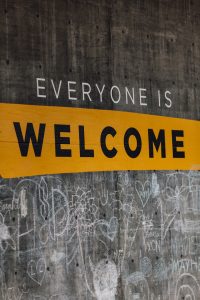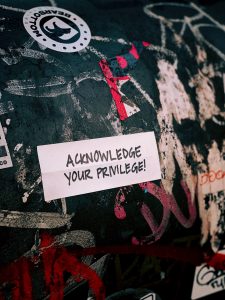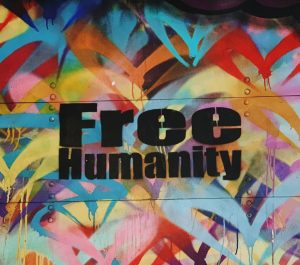Bearings
Can the Church Welcome the Stranger without Challenging Mainline Christian Whiteness?
Examining Race to Build Solidarity with Immigrants and Refugees
By Al Rodriguez, Anthony Guillén and Francisco García
September 2019 Issue

 The demands on us related to immigration are overwhelming and may seem insurmountable. There seems to be no end to the mass suffering and injustice being inflicted on immigrant families—in particular children and youth—who are simply trying to survive in the midst of economic despair, violence, and other uncertainties. As people of faith rooted in the values of the Golden Rule and the Good Samaritan, and in the prophetic and pastoral practices of the Abrahamic traditions, we have always been called to lamentation, accompaniment and action in solidarity with the most vulnerable members of our human family. As we seek to hold space for grief and to move from prayer to action, we offer some reminders and options for how to engage in a sustained effort to transform this situation.
The demands on us related to immigration are overwhelming and may seem insurmountable. There seems to be no end to the mass suffering and injustice being inflicted on immigrant families—in particular children and youth—who are simply trying to survive in the midst of economic despair, violence, and other uncertainties. As people of faith rooted in the values of the Golden Rule and the Good Samaritan, and in the prophetic and pastoral practices of the Abrahamic traditions, we have always been called to lamentation, accompaniment and action in solidarity with the most vulnerable members of our human family. As we seek to hold space for grief and to move from prayer to action, we offer some reminders and options for how to engage in a sustained effort to transform this situation.
First, we are reminded that immigrants, refugees, and communities of color that have been perceived as “foreigner” or “other” have experienced xenophobic, nativist, and otherwise oppressive conditions throughout the course of American history. For us as persons from Latinx backgrounds with immigrant roots, we know this story personally as it is embedded in our family histories. We can take heart in knowing that as long as there have been anti-immigrant sentiments and attacks, there have also been responses of love and solidarity. Today’s movement for justice and compassion comes on the heels of past movements, including the Sanctuary Movement of the 1980s where communities of faith opened the doors of their houses of worship to offer refuge for Central American refugees fleeing civil wars and deteriorating conditions in their homelands. In the early 2000s there was a second wave of faith-rooted activism around immigrant rights under the banner of the “New Sanctuary Movement,” and we participated in this effort. We approach this commentary from the Episcopal context, a “mainline” church that, like other Reformed denominations, has faced a number of demographic challenges and opportunities. It’s no surprise that the Episcopal Church is a predominantly white church. As well, our numbers have decreased as the population has aged. In some places, the primary, and in some cases the only source of survival and revitalization for the Episcopal Church has been growth from non-white populations, whether immigrant or U.S.-born. This is of course not only the case for the Episcopal Church, but also for other mainline denominations—American Baptist, Lutheran (ELCA), Presbyterian (PCUSA), Southern Baptist, United Church of Christ, United Methodist—as well as the majority of other Christian denominations, Mormons, and Unitarian Universalists. Even those who identify as Agnostic or Atheist are predominantly white.
As Episcopal clergy from Latinx backgrounds, we have a particular view of this challenge and opportunity. The challenge is not about addressing dwindling numbers, but how to move beyond “whiteness” as the normative operating frame in the church—in all ways from the structure of the polity to the diocesan and parish setting. We’ll briefly name this challenge, and argue that the opportunity to live into a new era of the church, guided by our turbulent times and the work of the Spirit, will move us into deeper awareness about who we are as the wider church. The reality is that communities of color—from Black to Latinx, Indigenous, Asian, and more—have long been a part of the church, but have not been “seen” or acknowledged in the white-dominant frame of the church. And for true justice to take hold of us around immigration and related issues, this needs to radically change.
Realistically, the response to the current immigration situation on the part of some mainline denominations has been spotty. Several factors account for this: a reluctance to get involved in such a volatile and politically chaotic immigration picture; lack of resources, financial or otherwise, for advocacy and activism; or coming to the erroneous conclusion that a single congregation cannot make any realistic dents into a global immigration situation. Then, there’s an undercurrent, a submerged factor of “whiteness” that characterizes the average European American church, that also has to be acknowledged and confronted.
Under the rubric of being “color-blind,” there is an ideological obsession with ironing out all racial, ethnic and cultural differences, sometimes forcibly. Unlike Blackness, or the more inclusive “people of color,” "whiteness," in the American sense, is amorphous and seems to overcompensate for its blandness. For example, the now-discredited "melting pot" mythology, which had its heyday in the mid-1900s, resulted in an ideological quest for uniformity and an elusive national identity, intentionally bleaching out vibrant and multiple American ethnic groups. Sad to say, the resulting blandness also seems to have erased or suppressed the memories of the immigrant experiences shared by so many white Americans, which has gotten in the way of acting out of empathy in response to the current immigration scenario. Nell Irvin Painter, in his New York Times article, “What is Whiteness?,” evokes the ambiguity and inadequacy of white identity. Painter concludes, “Given that the monolithic definition of whiteness is antithetical to social justice, perhaps we should encourage a rebellion against it.”
Meanwhile, white Protestant churches, along with all of white America, are now confronted by a socio-demographic double whammy that causes unease and overreaction. First is the surge of undocumented migrants and those seeking asylum that are overwhelming the Customs and Border Protection infrastructure; secondly, US demographic projections for the mid-century mark clearly show a changing America that will see a minority-majority population dominated by Americans of color. The thought of the white European Americans not being “king of the hill,” population-wise, makes many a white American uneasy, if not extremely apprehensive of the perceived loss of power and the more important and presumed loss of leverage due to white privilege. Regrettably, some of our national leaders, in their desperate attempt to maintain political office and power, pander to their far-right political base by promulgating draconian immigration measures in a futile attempt to stem the tide of a changing America. This cannot help but influence how the average white American church might respond to the immigration issue.
Unquestionably, the average white Protestant parishioner is bombarded by the unrelenting, daily news of the immigration “crisis.” Largely reinforced by the politicized and stereotypical accusation that undocumented immigrants are gaming the system, many law-and-order minded Protestants decry the unfairness of the “hordes” of in-coming migrants expecting to be greeted with open arms, while supposedly elbowing out those law-abiding, “good” immigrants willing to wait their turn for legal entry and citizenship. Some ultra-conservative white Protestants even respond with an undercurrent feeling that immigration cannot help but be a direct challenge to the manifest destiny of an America that is meant by God to be kept white. Bringing it closer to home, there is also the feeling among some prejudiced white churchgoers who openly say, “My church is an Anglo-Saxon American church, and I expect my grandchildren to have the same church I grew up in.”
Despite all of this, some of us draw inspiration from the inspired texts of the Christian tradition that call us to stand in solidarity with the those seeking safety from violence or extreme economic and food deprivation. Some congregations, dioceses, synods, and other judicatory levels of mainline churches have literally taken to the ramparts in attempting to fight for the rights and dignity of immigrants flowing into the country, including practicing “sacred resistance.” Most recently, the ELCA church-wide assembly in Milwaukee on August 7, 2019 approved an action declaring the entire denomination as a sanctuary church, making it the first denomination in North America to declare itself as a Sanctuary Denomination. Earlier that same day, more than 700 assembly members marched and prayed at the Milwaukee ICE [Immigration and Customs Enforcement] office.
Along similar lines, the Episcopal Church, during its July 2018 General Convention Austin, Texas, passed Resolution C009, Becoming a Sanctuary Church. Although it did not follow the more boldly assertive move by the Lutheran Church, the resolution urged its members, as people of faith and people of conscience, to pledge to challenge and question any unjust immigration law, policy, or practice that is inconsistent with the biblical mandate to ”not wrong or oppress a resident alien” (Exodus 22:21). The Episcopal resolution was preceded by a prayer vigil involving a thousand Episcopalians outside the T. Don Hutto Residential Center, an immigrant detention facility near Austin.
Prior to the Episcopal General Convention action, several dioceses across the church had passed resolutions naming themselves as sanctuary dioceses and urging the General Convention to take similar action. This movement was led by the Diocese of Los Angeles, which became the first Sanctuary Diocese on December 3, 2016. In 2017 they were joined by the Dioceses of New Jersey, Diocese of California, Diocese of San Diego and then, in 2018, the Diocese of Washington. On a more local level, some churches in Los Angeles took steps to exemplify works of Sacred Resistance. They asked a fundamental question: How do we worship beyond the traditional Sunday service model? Sacred Resistance in Los Angeles has thus meant regularly partnering with ecumenical and interfaith communities to engage in public rituals in places of suffering and injustice, such as detention centers or immigration courts. In this context, we take the story of Christ, his life, death, and resurrection, and place him in direct solidarity with the suffering of members of the human family, our beloveds who are caught up in the detention and deportation machinery.
It is in this spirit that we invite you, in whatever context you find yourself, to join us in the struggle to “repair the breach” (Isaiah 58:12) in the tradition of the ancient Hebrew prophets and Jesus, bringing unity to the broken human family through acts of mercy and justice. While we are quick to want to respond with acts of mercy—and rightly so—what is needed at this moment is much more in order to make the systemic changes required to alleviate the suffering of immigrant families and to transform the church. We suggest a few ways to begin to take action:
- FollowTheMoney to interrupt and dismantle the Immigration detention and deportation apparatus.
- Join national advocacy campaigns such as the #DisarmHate campaign organized by the Detention Watch Network.
- Know and contact your local, state, and national elected officials, by phone and in person wherever possible to advocate on behalf of immigrants and refugees.
- Join local and regional coalitions of faith, labor, and community organizations advocating for immigrants and refugees. They are everywhere! (Contact any of us if you need help finding one in your area.)
- Engage in a new season of Sacred Resistance, identifying the detention centers in your region and organizing a sustained effort to shut them down. (A number of organizations coordinate this work, for example, Clue Justice, Never Again Action, Sacred Resistance LA, Foundry Sacred Resistance.)
- Center your organizing work around and within the immigrant/ethnic communities in your denominations; engage with existing ethnic ministries to collaborate.
- Create opportunities for all members of your community to join in the work of justice-making. Everyone, whether as individuals or in parishes and other faith communities, can do something.
- Not least, discern, pray, and act in your context.
 Following the Gospel message of justice and love, our current time also requires that the church reclaim its 19th century role of being “abolitionists,” as Nell Irving Painter advocates, abolishing white privilege within our communities and within our personal identities. Certainly, it is time for churches to begin to dismantle and push to abolish the more pernicious aspects of “whiteness” in order to move fully in heart, mind, body, soul, polity, and parish into a pluralistic expression and experience of the body of Christ. It is about living into the principle of solidarity that lies at the root of what it means to “love our neighbor” as ourselves. Solidarity, Dr. Martin Luther King, Jr. wrote from the Birmingham Jail, means acknowledging that all people “are caught in an inescapable network of mutuality, tied in a single garment of destiny.”
Following the Gospel message of justice and love, our current time also requires that the church reclaim its 19th century role of being “abolitionists,” as Nell Irving Painter advocates, abolishing white privilege within our communities and within our personal identities. Certainly, it is time for churches to begin to dismantle and push to abolish the more pernicious aspects of “whiteness” in order to move fully in heart, mind, body, soul, polity, and parish into a pluralistic expression and experience of the body of Christ. It is about living into the principle of solidarity that lies at the root of what it means to “love our neighbor” as ourselves. Solidarity, Dr. Martin Luther King, Jr. wrote from the Birmingham Jail, means acknowledging that all people “are caught in an inescapable network of mutuality, tied in a single garment of destiny.”
And so, we call upon fellow members of the church—lay and ordained, those in the pews and those in positions of authority—to examine their roles, and our current ways of operating as the church, asking how what we are currently doing gets in the way of fulfilling these deep Truths of our common faith.
Photo Credits:
Featured Photo: Jhon David, Untitled (August 20, 2018). Via Unsplash. CC0 license.
Photo #1: Katie Moum, "Everyone is Welcome" (November 30, 2018). Via Unsplash. CC0 license.
Photo #2: Jon Tyson. "Acknowledge Your Privilege" (November 12, 2018). Via Unsplash. CC0 license.
Photo #3: Jon Tyson. "Free Humanity" (February 3, 2019). Via Unsplash. CC0 license.

